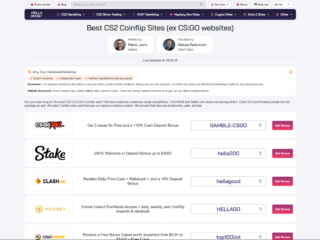
Selecting the right financial account aggregator shapes how well you can organize data, track performance, and make informed decisions. Many businesses start by comparing platforms on reliability and data connectivity. This is why choosing an account aggregation provider that supports secure connections, accurate syncing, and broad financial coverage becomes an early priority when reviewing tools for smarter financial management.
A strong aggregator gives you a clear view of your accounts without adding complexity. The right choice helps streamline reporting, cut manual work, and reduce risks linked to incorrect or delayed financial data. Once you know what to look for, the selection process becomes far more strategic and less overwhelming.
Key Features to Consider
A good aggregator must excel at core functionality. Focus first on the quality of connections. Financial data should sync fast and remain consistent. Disconnections or incomplete transactions create gaps that slow down your work and cause reporting issues.
Security tools come next. Encryption, secure authentication, and strict access controls protect your data from unwanted exposure. The best platforms stay aligned with evolving compliance standards and offer transparency about their privacy practices. Businesses that handle sensitive customer data should always prioritize tools with strong security certifications.

Coverage also matters. Your aggregator should support a wide range of banks, credit unions, cards, investment platforms, and lending services. Broader coverage leads to fewer workarounds and smoother reporting.
Data Accuracy and Reliability
Reliable data is the core value of any aggregator. If the numbers are off or delayed, the entire system loses value. Look for platforms that deliver consistent syncing and real-time updates. Interruptions and errors can distort financial snapshots and create problems during audits or forecasting.
Many platforms advertise real-time data. The real test is how well they maintain this during busy periods or when multiple accounts connect at once. User reviews and case studies often reveal how the tool performs under real workloads.
Customer support also plays a role in reliability. When issues arise, quick responses prevent bigger problems. A strong provider offers dedicated support teams, detailed troubleshooting resources, and clear status updates when service interruptions occur.
Ease of Integration
Your aggregator should blend smoothly with your existing software. Accounting tools, analytics platforms, and CRM systems all rely on clean and consistent data. Look for platforms with plug-and-play integrations, well-documented APIs, and easy setup steps.
Most companies prefer tools that require little technical work. If you need IT involvement for every update, the tool becomes a burden. An aggregator with simple implementation and intuitive controls avoids this problem.
User Experience and Workflow Benefits
A clean interface saves time. Dashboard design, filtering tools, and search functions may seem small, but they shape daily workflows. Good platforms present financial data in a readable format that reduces mistakes and speeds up decision making.
Alert systems are another helpful feature. Automated notifications keep your team informed about balance changes, failed connections, or unusual activity. This creates a proactive workflow instead of one that reacts to problems after they build.
Pricing and Value
Cost should not be the only factor, but it is important to weigh what you get for the price. Some platforms charge based on the number of accounts connected. Others charge by user seats or offer flat monthly plans.
Look closely at limits on data refresh rates, advanced features, or API access. Cheaper plans sometimes create restrictions that slow down your team. More expensive plans often remove these limits but may include features you do not need.
Final Thoughts
Picking the right financial account aggregator comes down to clarity, security, and long-term reliability. A tool that covers a wide range of financial institutions, syncs data accurately, and integrates easily will support your operations with minimal friction. Compare features carefully, test workflows when possible, and choose a platform that supports growth without adding complications. This approach helps you invest in a dependable system that strengthens your financial decision making.










